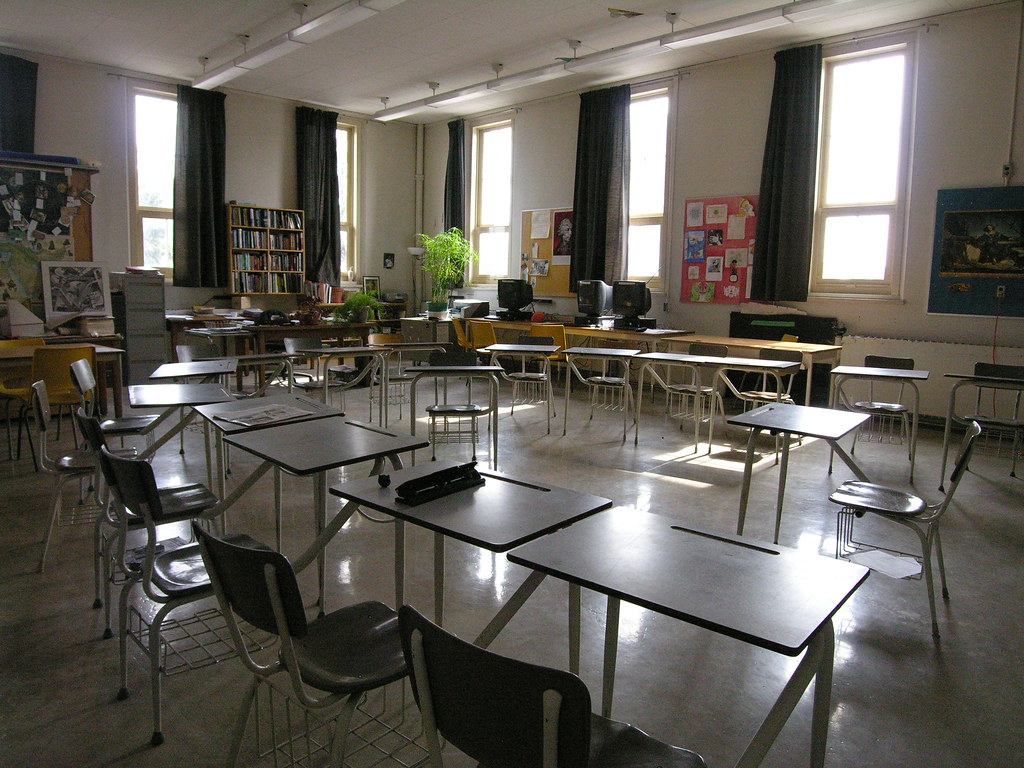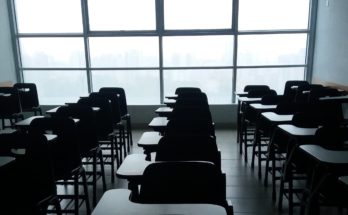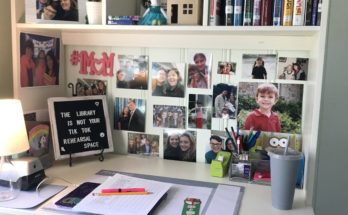
Every morning near Sunset Park in Brooklyn, Guadalupe Mendieta walks to the local public school to pick up free breakfast snacks for her three sons. Since the city’s schools shut down in mid-March in response to the spread of COVID-19, Mendieta, a recently unemployed home health aide, has had to balance the chaos of having three young boys — ages 5, 6, and 11 — at home while they attend school virtually, all at the same time.
Mendieta is careful not to let her children spend too much time outside. Their building has more than 40 apartments, with seven or more on each floor. She’s worried that if one of her neighbors has a cough, they might touch a railing or a doorknob.
“It’s been a week since they went out,” she said. With days in between outdoor strolls, she and her children have been noticing the seasons change. “Before trees had little blossoms, now they have leaves, and next time we go out there’s going to be more green on those trees.”
After her morning trip for bagels, muffins, and juice, Mendieta makes sure that her kids are up and ready to mark themselves present for their online classes. Her oldest, Omar, takes care of his own attendance by logging in to his school’s online portal. She has to make sure that her two younger children, Daniel and Noah, call in and say hello to their teachers before moving on to other activities.
Much of the recent reporting about remote learning has highlighted the differences between affluent parents and lower-income parents in their widely disparate capacity to engage with their child’s learning. Many low-income parents struggle to get a steady internet connection or find a quiet place to work that isn’t already occupied by another family member. Nearly 24% of all children in New York City live in poverty, with the highest percentages in the Bronx (38%) and Brooklyn (26%).
Mendieta keeps track of the various apps that teachers use for online learning for her older son, and finds coloring book pages online and prints them out from home for her two younger boys. She finished high school in 2012 and completed one year of college last year. With all her kids learning from home, she often has to help teach them. “I know what I have to do, but it’s still confusing sometimes,” she said over the phone.
During a normal school year, Mendieta’s two older sons would be attending P.S. 94 in Brooklyn’s 15th school district. Almost half of the school’s student population are English Language Learners according to the Department of Education. Around 96% of Sunset Park’s public school students qualify for free lunch. Now, instead of that free lunch, Mendieta either makes sandwiches or chicken and rice with whatever fresh vegetables are available at the food pantry.
Before the coronavirus started spreading in New York, Mendieta cared for the elderly and the disabled as a home health attendant. But now, she hasn’t worked in months. When the schools closed, she had to quit her job in order to stay at home and take care of her children. She lives with her partner and the father of her children, who has been able to continue working as a butcher near a local hospital, waking up at around 3 in the morning and returning home at 2 or 3 in the afternoon.
Mendieta and her partner are able to provide internet access, though it amounts to her family’s highest monthly bill. They own two devices (a shared laptop and iPad) for her three children’s online lessons. Even so, it’s taking her kids a little longer than usual to get a handle on what they’re learning. “It’s hard for them because the environment that they have in school and at home… It’s pretty different,” she said.
Many children across the five boroughs have parents and guardians who are essential workers; they’re nurses, grocery store clerks, and emergency service workers who have to go to work every day despite the pandemic. But others are like Mendieta — out of a job, trying to feed a family, and managing a full house.
Jahlel Victor and his mother, Angel, face a similar struggle in Far Rockaway, Queens. Angel is a stay-at-home single mom of five kids whose son, Jahlel, is a student at QIRT — Queens High School for Information, Research, and Technology. And QIRT isn’t just Jahlel’s school, it was also a source of income for him. Before the coronavirus, he worked there as an office assistant and as a tutor, helping other students with math and science.
Like Mendieta, one of Angel’s main concerns is access to food. With a family of six to feed, she and her children have been consistently going to the local supermarket, as food becomes more scarce and more expensive.
Adding to her daily grocery shopping and preparing meals, Jahlel’s mother makes sure each of her children gets out of bed and marks themselves present in their virtual classrooms. al classrooms. “Education is the key,” she said. “And right now, when you come from really not having nothing and you’re trying to get out of the struggle, education is very important. I’m not trying to have my kids slip behind because of this.”
QIRT keeps a daily attendance log, but everything else — attendance in specific classes, participation levels, assignment submissions — is monitored by individual teachers. Some educators are holding virtual classes in real time, while others record lessons on YouTube and share it with students. Many have been assigning students online homework with no accompanying class-like video components. In any given student’s schedule, classes and schoolwork can be spread out across multiple platforms like Google Classroom, Pupil Path, or Zoom.
But Jahlel’s mom has her own attendance method. She has a notebook where she keeps track of everyone’s schoolwork: what assignments have yet to be completed, what emails have been left unanswered. She says she even cross-references the verbal updates she gets from her children with the information on their Google Classroom accounts. If Angel feels like there might be a miscommunication, she will email her kids’ teachers.
For now, the educational future for NYC public school students like Jahlel remains uncertain. City officials have suggested that remote learning will still play a significant role in students’ schedules, with the possibility of half-days and staggered classes mixed with online lessons.
The fate of in-person learning factors into Guadalupe Mendieta’s future, too. When this passes, she wants to go back to college herself. “It’s hard for me now to stay concentrated, especially with three boys,” she said. “But I want to do something with business administration in the field of hospital work.”



